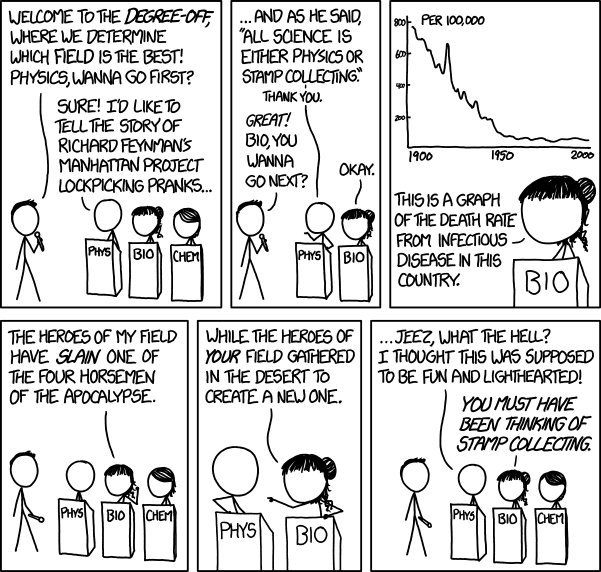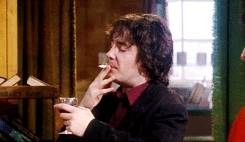Content Warning: Discussion of trans exclusion narratives
They say 2020 is the year of the blog (They being two or three people in my Twitter timeline), and I’m full of new year’s resolutions so let’s talk about Cancel Culture.
Cancel Culture, if you are blissfully naive, is an internet practice where someone who says something controversial or ‘problematic’ is repeatedly attacked and boycotted in an attempt to minimise the dangerous opinion’s platform. You can think of it as a reaction to the Paradox of Tolerance, in that it is most often the political left does to protect those viewed as being less powerful.
The fabulous YouTuber ContraPoints (Natalie Wynn) started January with a 100 minute long video discussing cancel culture after she herself was ‘cancelled’ for a recent video where she invited Buck Angel to provide a voice over for a quote. ContraPoints has put in a huge amount of effort into this video and it’s really one of her best, so I won’t explain the whole drama here, I’ll just point you toward her video. It’s here. You should really consider watching it.
This video really appealed to me for a lot of reasons. As you may well be aware, the University of Edinburgh has seen a lot of outrage regarding feminism and trans rights. The rest of this post, and indeed all of my content, comes from my perspective as a cis-gendered bisexual woman, and I would encourage you to do your own research on these topics, and to remember that I am no expert here. There are two important concepts here, trans-exclusionary radical feminism (TERF) which many people prefer to call ‘gender critical feminism’, and trans-inclusionary feminism. In a nutshell, the trans-exclusionary feminists are concerned that trans women will endanger female spaces and female safety. Trans inclusive feminism considers that trans women are women, and have the same need for female spaces as cis women. I use the words ‘trans-exclusionary’ and ‘trans-inclusive’ in this blog because at present I see that as the crux of the conflict. Many years ago, I understood gender-critical feminism to be about breaking down imposed boundaries of gender, but that’s not how the term is now used. It is now fairly universally used to mean trans-exclusionary philosophies. Maybe I misunderstood the term at first, or maybe it has changed, but for me it’s clearer to talk in exclusion/inclusion terms.
The New York Times recently argued that TERFs are a particularly British problem, which I’m not sure I agree with, but there is certainly a type of older British feminist that you almost ‘expect’ to come out with trans-exclusionary views, such as J K Rowling. Recently Rowling tweeted in support of Maya Forstater, a woman who took her employers to tribunal for not renewing her fixed term contract after she repeatedly made trans-exclusionary tweets. Her complaint was not upheld. I was irritated by people defending Forstater, and made this tweet, jumping on the cancel culture bandwagon for JK Rowling.
The Halo Reach realisation is real, incidentally. I remember being on the Halo fan forums at the time and enthusiastically telling a Bungie developer I’d be happy to have my multiplayer character grunt in a female voice, even if the model was the same. That memory, sparked after seeing some of the Reach remake trailers, struck me as a really clear example of why being correctly gendered in conversation is so important to people, in a way that cis folks like myself might find easier to relate to. On reflection, I wish I hadn’t said ‘fuck TERFs’ in the tweet, because that’s not going to invite any reasonable debate or encourage anyone to listen to my ideas. And this is the issue with cancel culture that ContraPoints’ video discusses. Cancel culture prohibits discussion.
While I was watching ContraPoints’ video, I was uncomfortably reminded of something my dad used to say to me when we were having political debate. My dad frequently calls me a ‘Trotskyite’, who’s too busy feuding with my fellows to pull together for the left as a whole. Much like myself, my dad will also say almost anything in a debate to win, but his observation about the left’s tendency to schism is a pertinent one. In the nineties, around our kitchen table, he was eerily prescient of the left’s challenges in the 2010s.
The Economist recently posted a brilliant article about why the Conservatives are the most successful political party in the world. If it’s behind a paywall for you, the answer is that the Tories are very flexible in morality and policy if it keeps them in power. They will be the party they need to be to get elected. The left, by contrast, will fight within itself about how exactly it should respect all members (see this Atlantic article, this Guardian article which seems to suggest that Labour should have done everything differently in the last GE).
We live in a world where it is very easy to express an opinion, and where you can be cancelled for that opinion just as quickly. Take Joan Meiners who tweeted about the inaccuracy of peoples’ bee tattoos, not realising that those tattoos were a specific reference to the Manchester Evening News Arena bombing.
I liked Joan’s original post when I saw it, and then I liked the tweets criticising it. Where do I fall in the outrage league?
How do we teach the academics of the future to critically analyse ideas when they see trusted, powerful, and adored figures like JK Rowling being told to die for what is an opinion? Especially when we say we’ll assess them, and the perceived penalty of getting it wrong is so high? In my first year science course, I tell my students I expect compassionate science from them, but I don’t tell them how I expect them to critique a piece of science compassionately. I tell them their best exposure to critical analysis will be in scientific papers, but we all know how bad peer review is for encouraging this kind of discourse.
Trans rights may seem like a strange road to thinking about how I teach critical analysis, but the concern and trepidation I felt about these issues must be a reflection of how it feels to critique something in a modern classroom. Our classrooms will have students who are aware of these debates, aware of these controversies, and whom we’re asking to critically analyse a piece of work. It is our responsibility to teach with an awareness of this culture.
So this year I’m going to work on actively teaching compassionate critical analysis. I’m not totally sure how this will go yet, so I started drafting an outline. Have a look through the slides and see what you think, feel free to adapt or hit me up on Twitter to give me any feedback.
Cancel culture is cancelled.


/cdn0.vox-cdn.com/uploads/chorus_asset/file/3523382/Medical_studies-05.0.png)